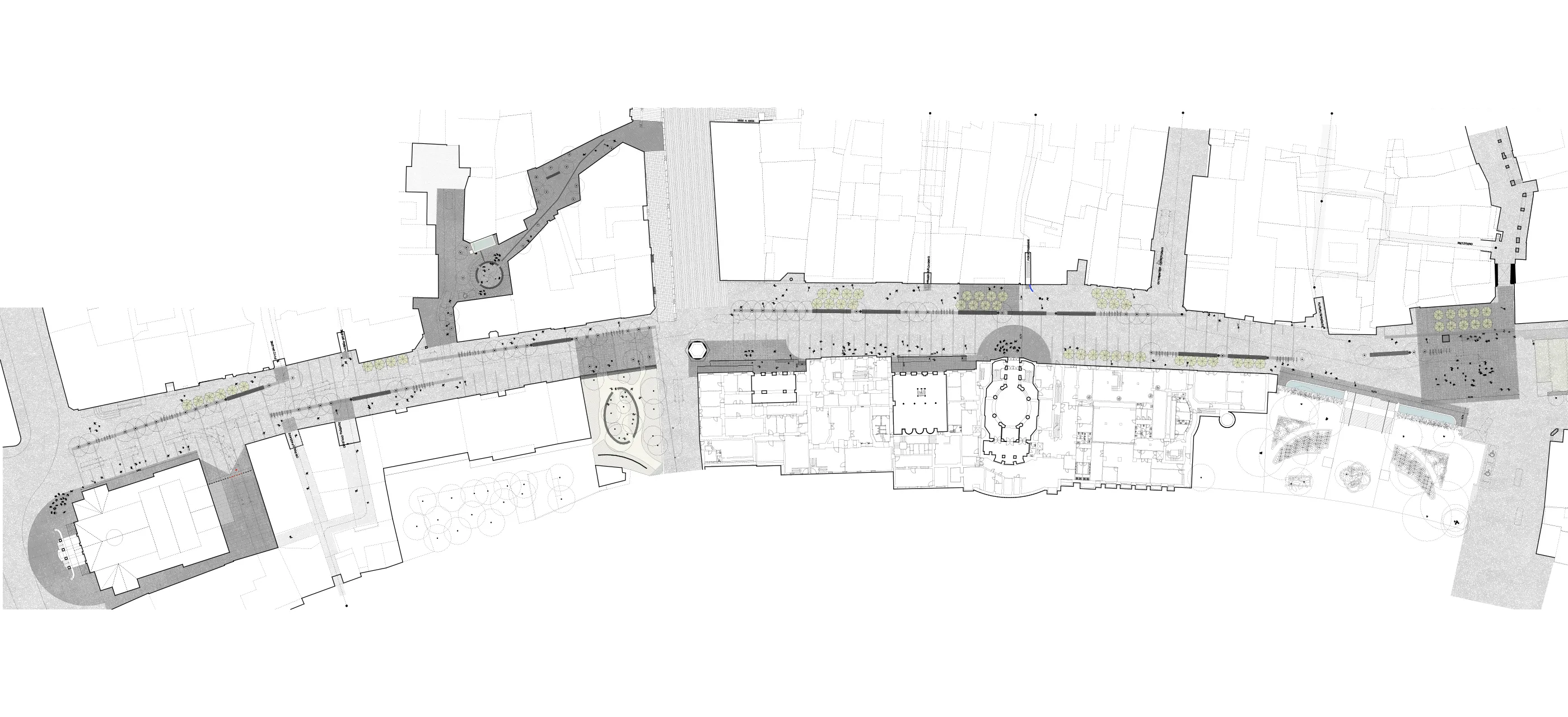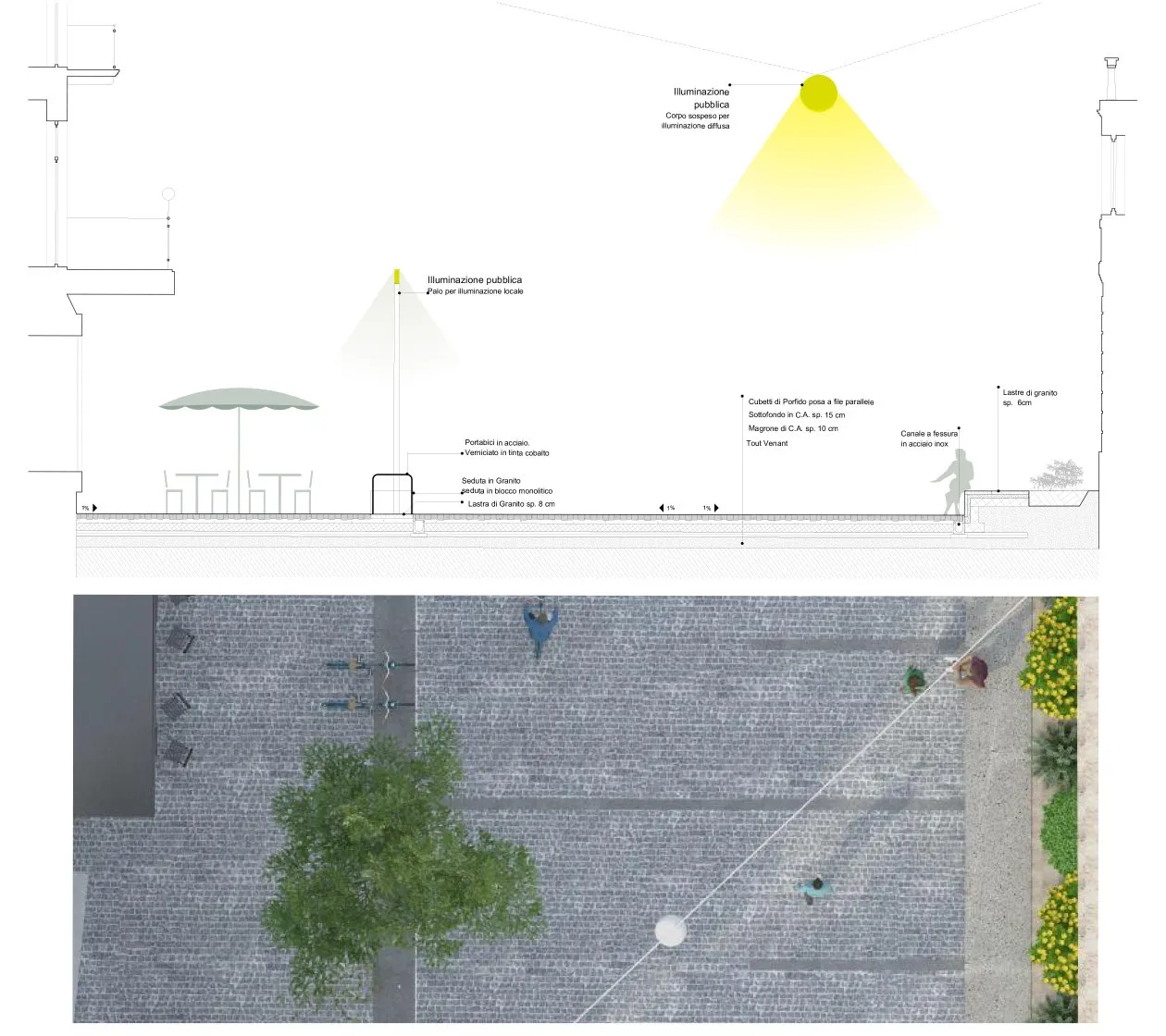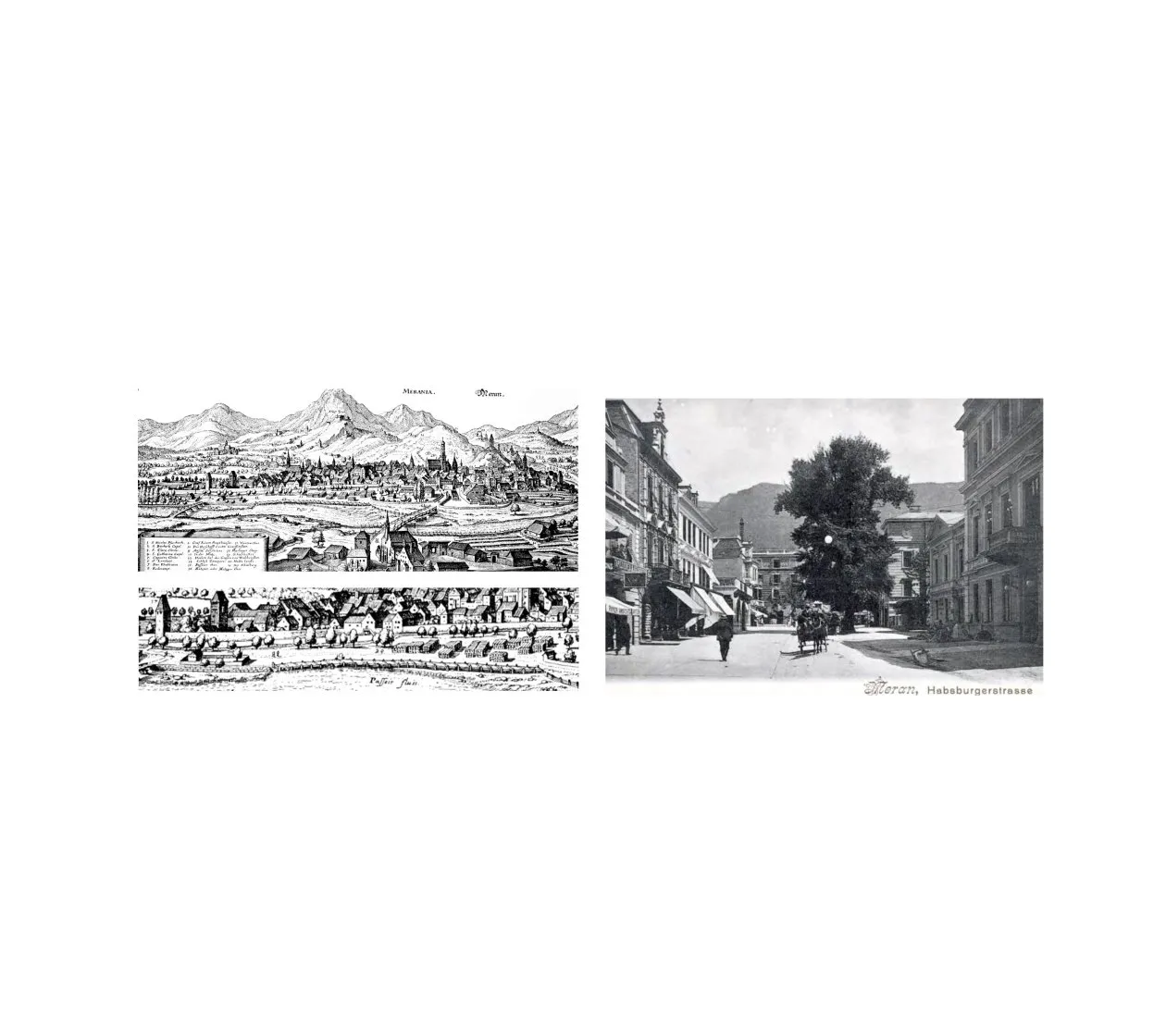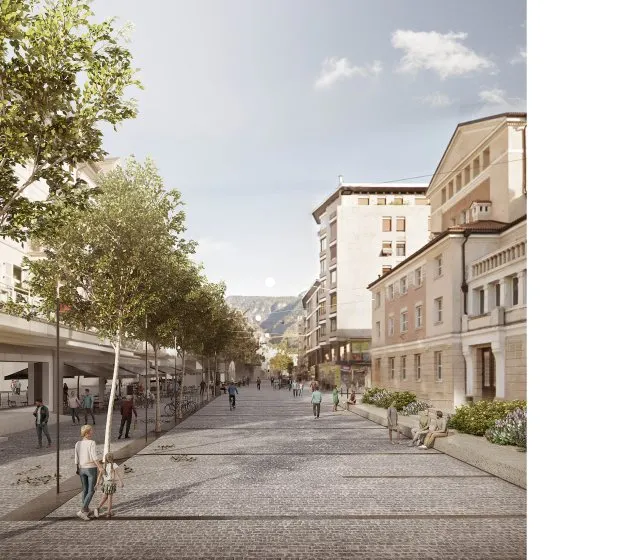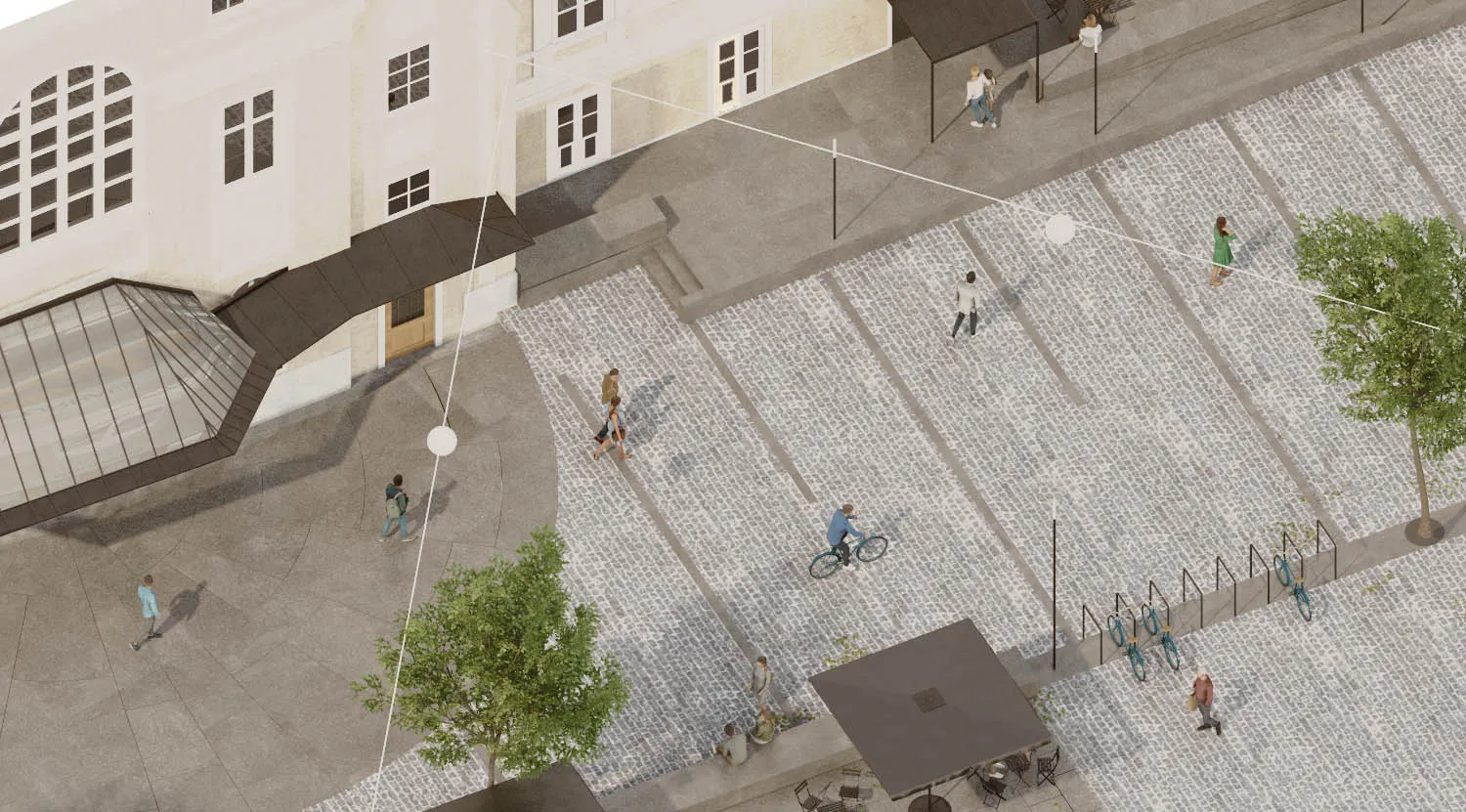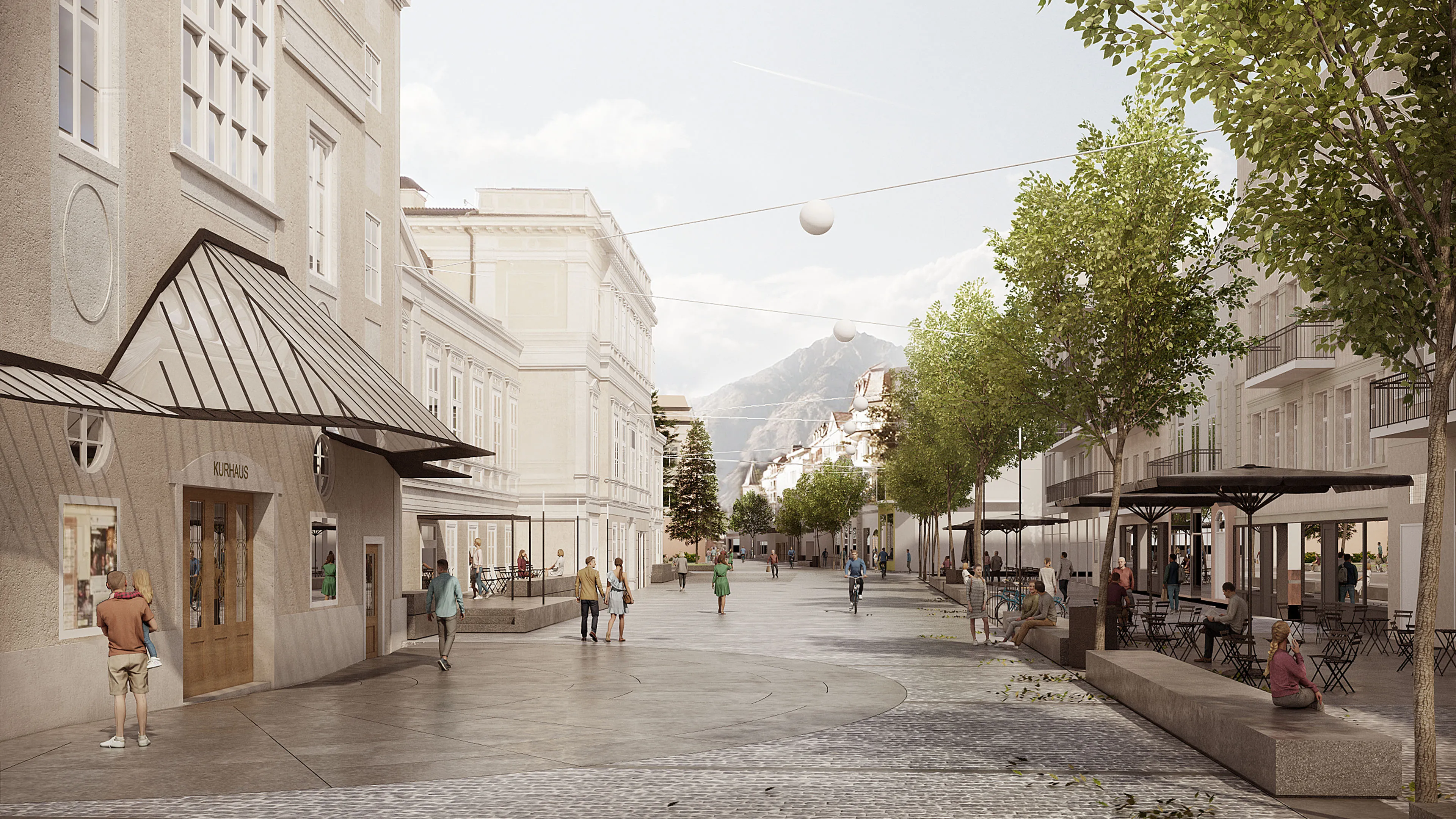
An ancient plan of Merano clearly indicates that the preferred orientation of the city's main streets is parallel to the Passirio river and the old fortified wall, running from East to West. However, these streets are frequently intersected in the perpendicular direction by others. Corso Libertà superiore is no exception; it experiences heavy urban traffic, particularly from cyclists and pedestrians, as well as cars and other vehicles. The streets geometry has inspired the Design of Silence, which is evident through the design of the new pavements' pattern, the placement of the trees and urban furniture and the interpretation of the need for flexibility in of the space. Porfido (granite) cubes are arranged in a continuous texture,forming parallel and coplanar rows. Additionally, six evident lines -Functional segments- are positioned in the East-West direction, each oriented according to its specific area, accommodating various functional elements. In the perpendicular direction, smaller lines assist in reading the intersection with other streets, while specific areas and buildings are enhanced with surfaces made of local stone.
